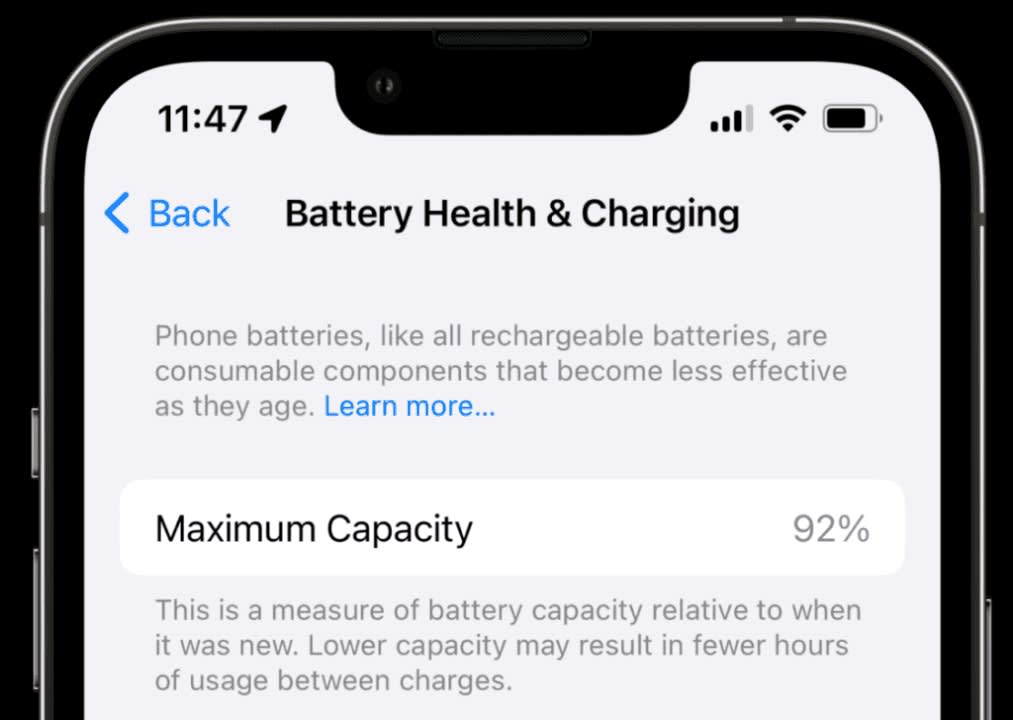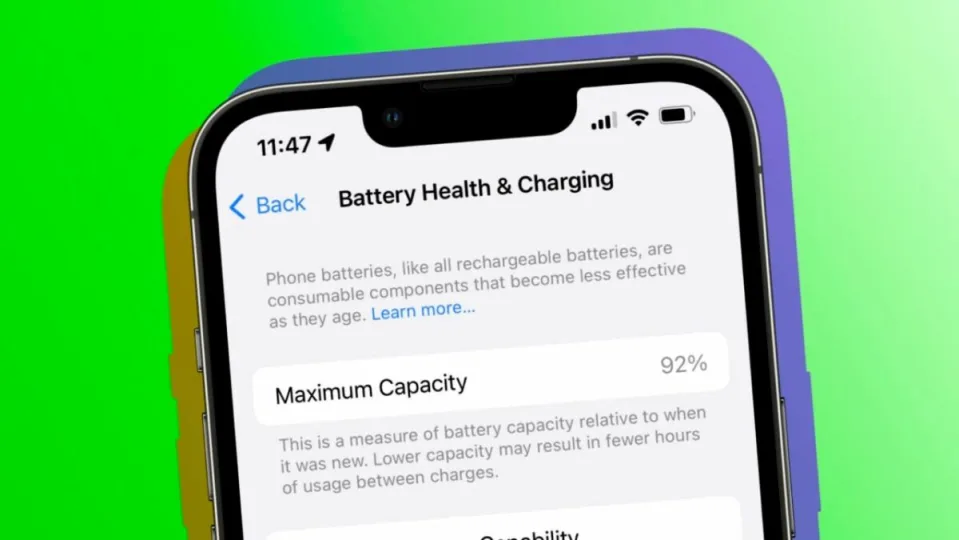The battery health of our iPhone is an essential indicator that shows us how much charging capacity is left in our device’s battery compared to its initial performance when we first got it. However, this percentage can be affected by small errors in the estimates, and this translates to a way to increase the health of our iPhone’s battery. A simple procedure to have the most accurate reading of our phone’s maximum battery life.
Understanding lithium-ion batteries and battery health
Lithium-ion batteries are the standard in most electronic devices, including the iPhone, due to their high energy density and fast charging capability. However, like any electronic component, these batteries also degrade over time.
The battery wear is linked to the chemistry of its operation. With each charging cycle, lithium-ion batteries lose a bit of their capacity to hold a charge. This is an unavoidable reality that is not limited to Apple products but applies to all devices that use this type of battery.
That’s why our devices come with a feature in the Settings app that displays the battery health. This measurement is expressed as a percentage and is calculated based on the current charging capacity of the battery compared to its factory capacity. However, this calculation, which is estimated based on the charging cycles we perform, can occasionally have some inaccuracies.
How to improve your iPhone’s battery health
Correcting this inaccuracy, in most cases, means improving the battery health. However, it’s worth noting that in some instances it could potentially decrease battery health. Nevertheless, in this context, we are not referring to a decrease in health, but rather to the correction of inaccurate battery health readings that were displayed previously.

The first method to improve battery health is to perform several complete and consecutive charging cycles. This process involves fully draining the iPhone until it shuts down, then continuously charging it to 100%. This procedure should be repeated at least three times, while also minimizing phone usage in between. By doing this, we provide the system with additional information to calculate battery health, which can increase its percentage.
The second option is to completely restore the iPhone. By doing so, the system will recalculate the battery capacity, resulting in an increased percentage of battery health in most cases, as the initial calculations are often conservative in their estimates. However, it is important not to restore from a backup, as it would retain the previous calculations and not force a recalculation.
As we mentioned earlier, the loss of battery capacity is an inevitable phenomenon that occurs over time and usage. However, it is not a cause for alarm, as even with a slight decrease in battery health, it is unlikely to significantly affect the iPhone’s performance in our daily use.
In any case, while it’s best not to obsess over this value, the methods we just discussed — along with tips on troubleshooting charging issues and prolonging iPhone battery life — can help us gain a clearer understanding of battery status. This information is important in deciding whether to consider a battery replacement or simply to set expectations for a battery that is no longer as new as it was on day one.
Some of the links added in the article are part of affiliate campaigns and may represent benefits for Softonic.


